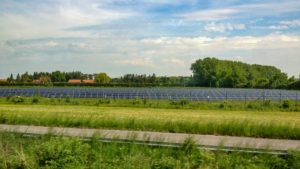The last few years have witnessed a growing focus on sustainability, with homeowners and business owners making a beeline for the trend. People want to conserve the environment in every possible way, and energy savings is the best place to start. But saving energy takes more than using LED bulbs, smart automation, and energy-efficient devices. Of course, these measures take you a long way, but going solar is perhaps the most effective approach to energy efficiency for the long haul. Besides choosing solar installation on rooftops, you can go bigger with a solar farm. Let us explain how this large-scale project makes a worthy investment.
Sustainability
Embracing sustainability is the best investment you can make right now because it always pays back. Solar farms utilize renewable energy to create clean electricity with zero emissions. They reduce the use of carbon-intensive fossil fuels, lowering the burden on the environment in the long run. Since the mindset is trending, the investment likely pays over the years and grows in value over time. Moreover, investing in it enables you to do your bit for the environment by reducing pollution, conserving natural resources, and creating awareness for sustainability.
Recurring revenue
Recurring revenue is another reason that makes the investment in solar projects worthwhile. You may be overwhelmed by the cost factor initially when you learn How to start a solar farm, but the prospect for long-term returns is good enough to justify the high value. Whatever the scale of your project, you can expect lifetime returns. Small-scale ones for businesses and residents lower electricity for years to come. Large-scale plants can make big money by selling the energy back to the utility that distributes it to users. The best part is that it offers a guarantee for recurring income over the years. Additionally, the overall cost of maintenance is low.
Simplicity
Although everything about setting up a solar farm sounds complex, it is simpler than you imagine. Components have no moving parts, and the inverters are stored in sound-proofed boxing. The panels hardly produce any noise, and they can run without objections from the neighboring residents and farmland. Setting them up close to load centers is an option because it makes them minimally disruptive to the local environment. The apt location reduces the transmission barriers and improves the efficiency of panels by minimizing line losses.
Beneficial to plants, animals, and humans
Besides the recurring ROI, solar farms are beneficial to plants, animals, and humans. The land provides a viable habitat for plants and animals. The area surrounding a solar farm is often grassy, and the local wildlife can graze between the rows. Both ways, it is inherently good for the environment. When it comes to the human factor, solar farms create jobs during installation and for lifetime maintenance. They do not increase flood risk, provided developers use stable materials that prevent soil compaction.
A solar farm sounds like a hefty investment, but the returns make it worthwhile. Beyond the sustainable income they generate, the positive impact on the environment is an even better reason to invest in them.

